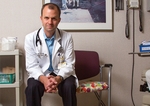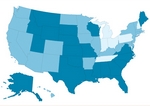business
Hospitals gain $1.5 million from each physician
■ Some primary care specialties tended to bring in less revenue; neurosurgeons topped the list at an average of $2.8 million.
By Victoria Stagg Elliott — Posted April 6, 2010
- WITH THIS STORY:
- » Related content
Hospitals made more money per affiliated physician in 2009 than 2007, but these numbers varied widely by specialty, according to a survey of chief financial officers released March 17 by Merritt Hawkins & Associates. Revenue generated by primary care physicians declined.
"The most powerful tool in health care remains the physician's pen," said Mark Smith, president of the physician search firm headquartered in Irving, Texas. "Patients are not admitted to the hospital or discharged, tests ordered or procedures performed without a physician's signature. Hospitals depend on doctors to drive patient care, which in turn drives revenue."
The firm's "2010 Physician Inpatient/Outpatient Revenue Survey" found that physicians generated an average of $1,543,788 per year. That number was $1,496,432 in 2007.
The authors suggest the numbers went up in the 2010 survey, filled out by 114 hospital CFOs, despite the economic downturn because physicians and hospitals are more closely aligned through direct employment or other arrangements.
The numbers, however, differed by specialty.
Neurosurgeons were the leading revenue generators, earning an average of $2,815,650 for a hospital. Invasive cardiologists came in second, bringing in $2,240,366 for an institution.
The primary care specialties, which included family practice, general internal medicine and pediatrics, tended to bring in less. In fact, their overall average declined to $1,385,775 in 2010, down from $1,433,532 in 2007 and $1,596,852 in 2004. Internists brought in an average of $1,678,341. Family physicians earned a hospital $1,622,832.
Merritt Hawkins analysts said the primary care decline is likely due to the economic recession. With more uninsured patients, fewer are going to primary care physicians, resulting in fewer hospitalizations, they said.
The report is available online (link).












